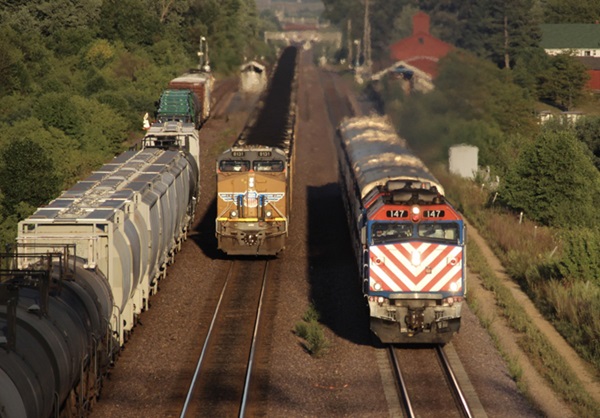
WASHINGTON — The U.S. Supreme Court is set to hear arguments today (Monday, March 28) on a case hinging on whether a locomotive is “in use” when it is not actually in motion.
The SCOTUS Blog reports the case, LeDure vs. Union Pacific, involves former UP engineer Bradley LeDure, who suffered injuries when he fell on a locomotive at a yard in Salem, Ill. Inspection after LeDure was injured found a small amount of oil where LeDure slipped. The locomotive was not attached to a train at the time.
LeDure sued under a federal regulation regarding injuries resulting from a railroad’s safety and inspection violations, specifically regarding the Locomotive Inspection Act. But the safety and inspection requirements of that act only to locomotives that are “in use” or “allowed to be used.”
LeDure argues the statute covers locomotives whenever they are available for use; Union Pacific argues it only covers stationary locomotives when they are part of an assembled train ready to move immediately.
A lower court ruled that the law in question does not apply to stationary locomotives; the Supreme Court took the case in recognition of conflicting rulings in other courts.
The Supreme Court had previously asked the U.S. Solicitor General’s office to offer an opinion on the case [see “Digest: Supreme Court case asks whether a stopped train is ‘in use,’” Trains News Wire, May 18, 2021].














Any other industry in our country would find the employer liable. Are workman’s compensation rules different for railroad employees than everyone else in our country? The engineer was on the clock working for UP, on UP property, on UP equipment. How is UP not liable? I hope the Supreme Court overturns the lower court ruling. Pure BS.
I would think if the engine was on a ready track, running or not, it is in use.
Unless its lashed up on a side track with the engine off, its technically in use.
Disagree, I agree with the lower courts ruling…as long as the unit is not attached to a train ready to move or already moving, it’s not in use, even if it’s idling. For on thing, is it “ALLOWED TO BE USED” if it has to undergo inspection first? IF the answer is “No, it is not”, then it is not in use per the Act.
So an employee has NO protection on a free-standing unit? What a loophole. That inspection act does not protect employees apparently.
I’m not familiar at all with the Locomotive Inspection Act, but surely even the gentle reader here knows and understands that locomotive engineers inspect locomotives, right? The Daily inspection, once performed, and then signed by the qualified inspector, which can be a locomotive engineer, in the daily inspection log book found on each locomotive, allows that locomotive to be legally used for that calendar day up to midnight the next calendar day.
Hypothetically, an engineer could have in the consist that is assigned to his train or a train in which he is performing service, locomotives that are not in service, that is to say, they cannot be used for power or set up to Lead in a consist controlling other locomotives, due to having defects or being past the 90 day inspection, for example, and these units not in service could be in the middle of a consist but still, the running boards and walking surfaces of both the in use and NOT IN USE locomotives would be used by the engineer for routine purposes and must be free of such conditions that would result in an unsafe condition potentially causing a fall. Why wouldn’t any injuries from such a fall be the carrier’s responsibility under the Federal Employer’s Liability Act (FELA)?